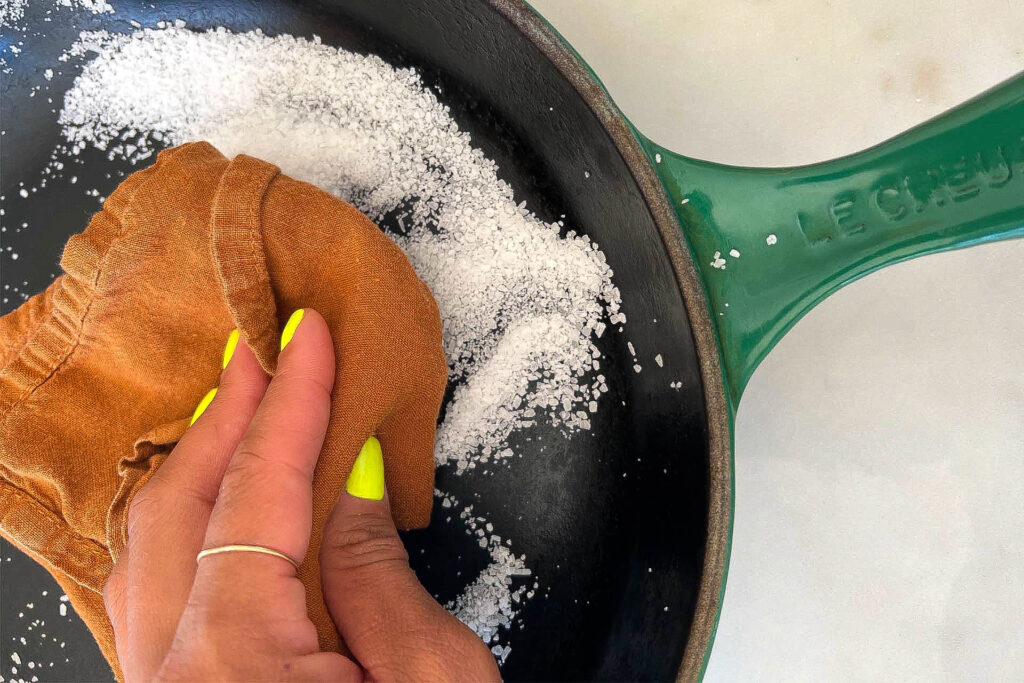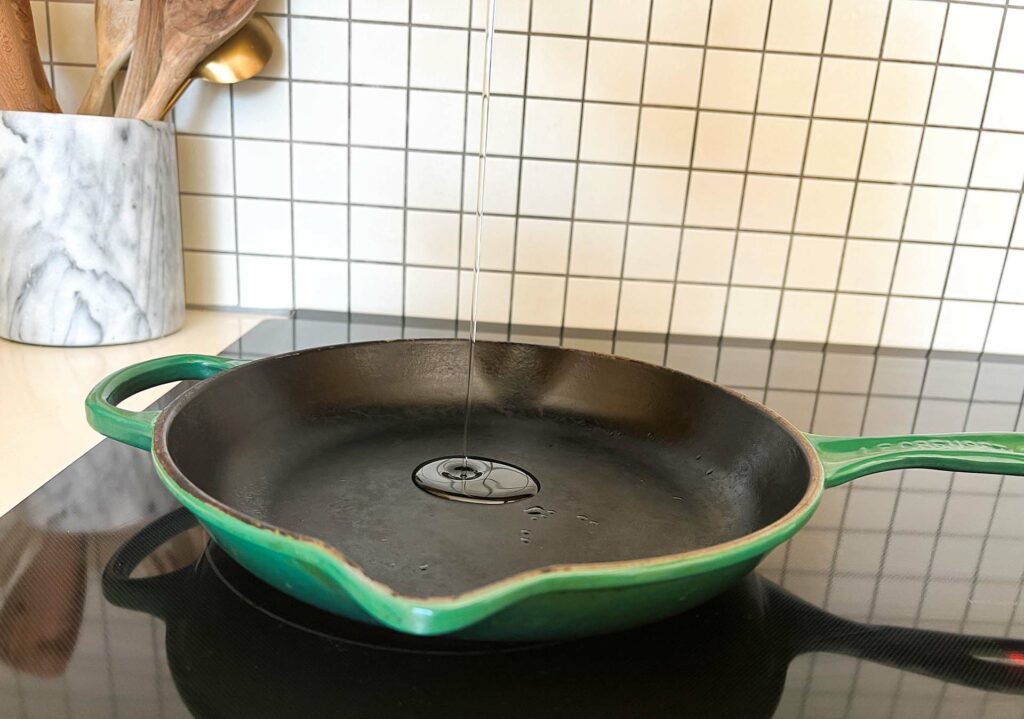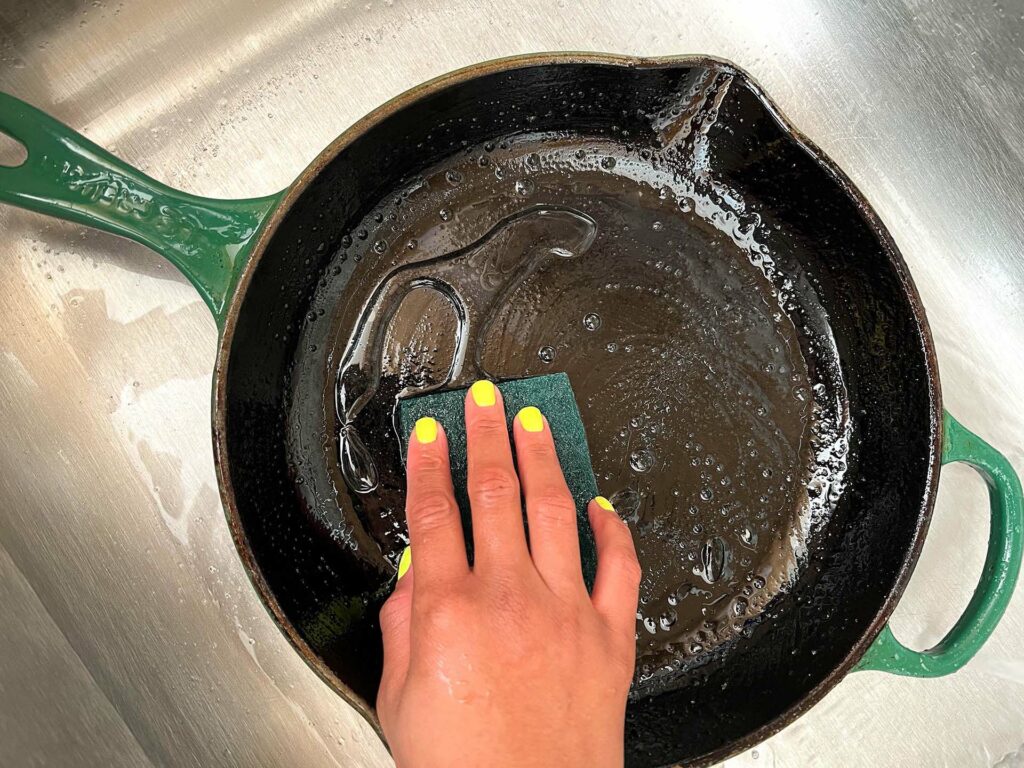
A cast-iron skillet is a kitchen essential due to its versatility and ability to evenly retain high heat. It’s going to give your roast chicken a nice crackly skin and your cornbread beautiful browned edges. They can be used for stovetop cooking, in the oven, or on the grill, making the lustrous black metal skillet a workhorse. If your cast iron skillet is well maintained, it can last you a lifetime, it may even outlive you (sorry if I weirded you out). You must maintain your cast iron skillet by making sure it’s seasoned, properly cleaned, dried, and glazed.
How to Christen Your Skillet
When you first get your skillet whether it was purchased, or a hand-me-down, it’s important to wash your skillet. When I say wash, I do mean with hot water and soap. This is the ONLY time you’re going to want to use soap.
If it’s brand new, it’s important to wash any chemicals that may be left on the surface from the manufacturer. And if it’s used, then you’re going to want to wash away any residue that may have been left on the skillet (a fresh start never hurt anyone ;).
Then, thoroughly dry the skillet.
The First Seasoning
‘Seasoning’ your skillet does not mean adding salt and pepper (though salt can help you maintain your skillet, see explanation below). So what does it mean to season your skillet? When multiple layers of oil are applied to your skillet over time, it creates a nonstick surface that’s rust-resistant. Although some new skillets come pre-seasoned, you’re still going to need to incorporate the routine of seasoning to maintain a slick and non-stick surface. Seasoning your skillet consists of two things, applying oil followed by heat, and cooking with it, of course!

So here’s how to season your skillet for the first time. Use a cloth or paper towel to lightly glaze the pan with neutral cooking oil. Cast iron is porous so the oil will absorb. Be sure to cover all metal surfaces of the skillet with a light coat of oil. Place the skillet upside down (to avoid small puddles of oil), place a cooking sheet on the rack below to catch any drips of oil, and set the oven to 450 degrees for at least an hour.
Allow the skillet to cool in the oven.
Once the skillet has cooled down, remove it from the oven and add an additional light coat of oil to the surfaces of your pan. Store your skillet in a dry place.
Maintain Your Skillet After Use:
Alright, so you’ve used your skillet and now there’s cooking oil and bits of food stuck to the surface. What now? To soap or not to soap…not to soap! You should avoid using soap because it can deteriorate your seasoning. Hot water is recommended.

After use, allow your skillet to cool down to a warm temperature. Rinse the skillet with hot (bearable) water and scrub with the back of your sponge or a scoring pad. For stubborn pieces of food, dry the pan and pour 3 tbsp of kosher salt and rub them away with a paper towel or cloth. Rinse and dry. Place the skillet on a medium lit stovetop to allow any existing moisture to evaporate. Season the skillet with a light coat of oil, and store.
Avoid:
- Liquids and acids
- Dishwashers
- Don’t soak in hot water
- Don’t use cold water, it may crack the skillet
- Never store with a lid because moisture may become trapped thus creating rust
Maintaining your cast iron skillet may cause you to take a few extra steps in the kitchen but you’ll find it to be absolutely worth it! Nothing beats the perfect sear of a cast iron skillet. The benefit of buy quality products is you only have to buy it once, but you must take good care of it.

